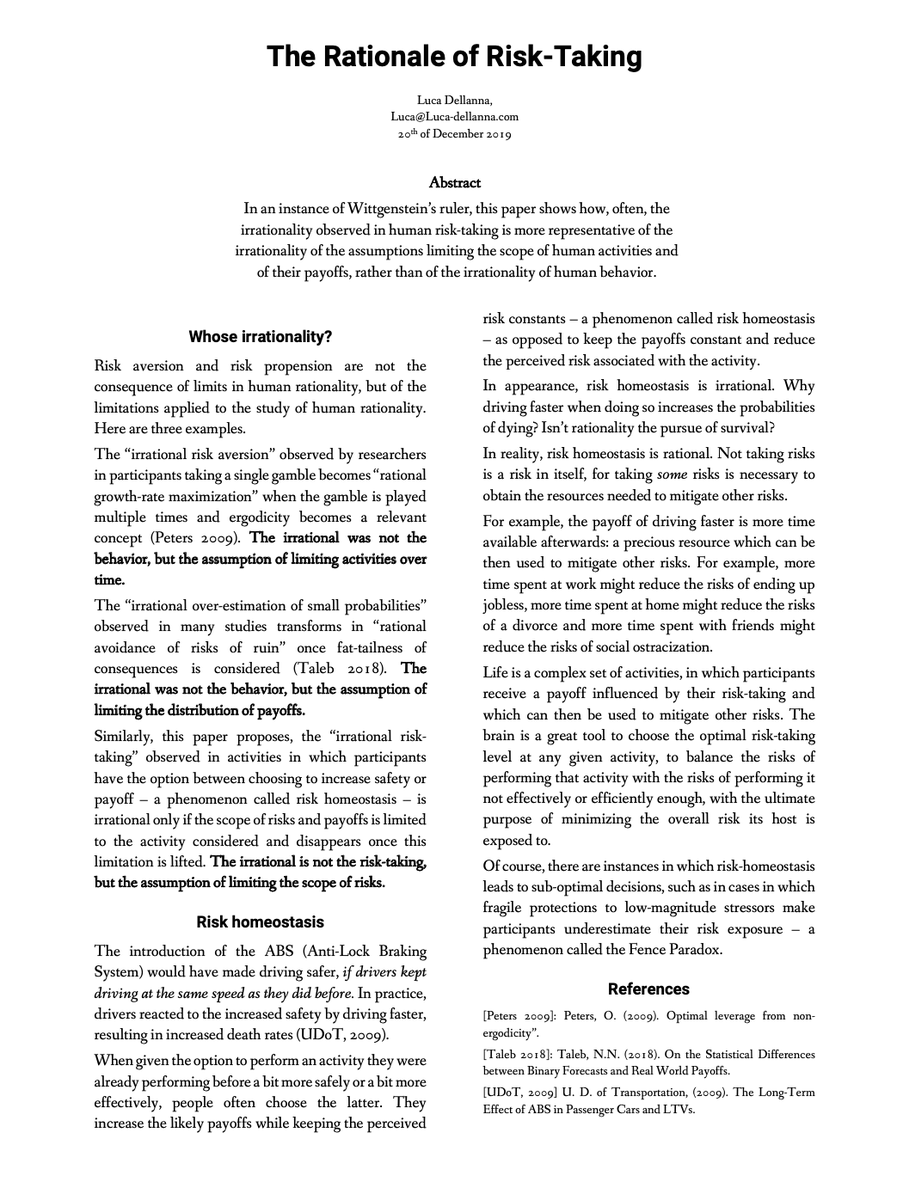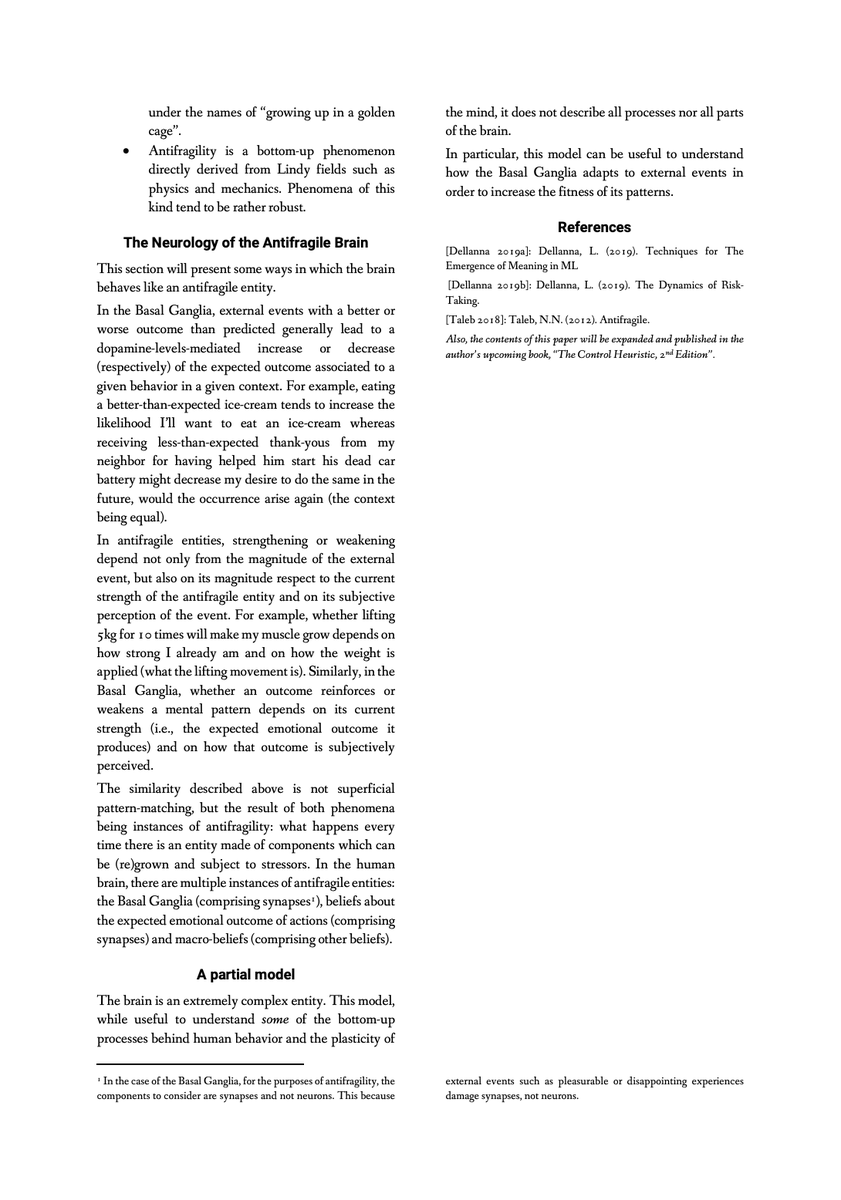I.e, …
(Pain is a signal of vulnerability, i.e. of risk exposure; more info in my post luca-dellanna.com/pain-signal-vu…)
In some circumstances, damage vicariously experienced through emotions is also used (eg, seeing an injured friend)
(we can imagine risk, but unless we experienced its consequences at least emotionally, we rarely do adapt behavior to imagined risk)
People use the frequency of the more common low-magnitude stressors to estimate the frequency of the rarer high-magnitude ones.
For ex., we often use the number of scares (eg emergency braking) to estimate the risk of driving on a road
Unless pain suppression gives advantage to manage *other* risks, such as being able to flee while injured.
luca-dellanna.com/the-dynamics-o…
Tomorrow, a thread on the fifth section: "Ergodicity and how to reap the gains of antifragility"










